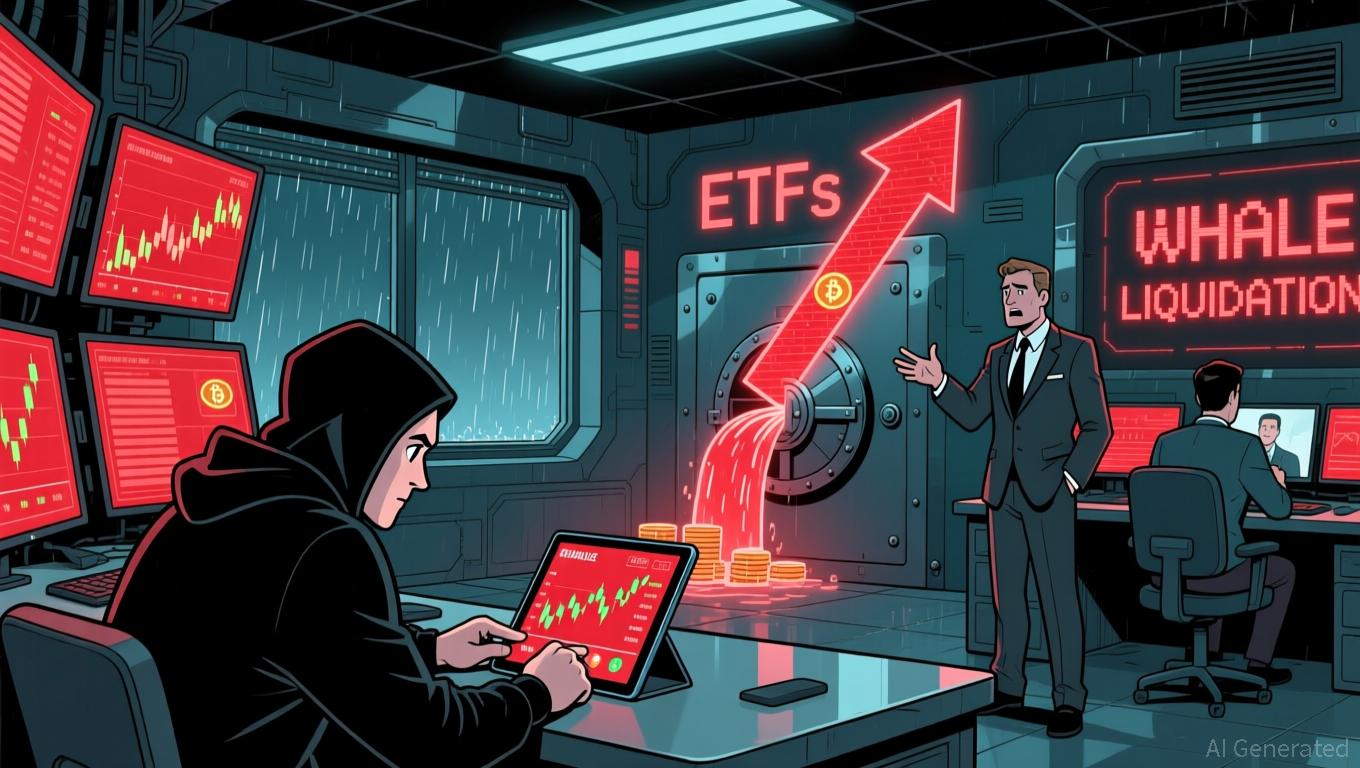Hyperliquid News Today: DeFi’s High-Leverage Trading Environments Increase Systemic Spoofing Threats
- Hyperliquid, a fast-growing decentralized perpetuals exchange, suffered a $4.9M bad debt loss from a third 2025 market manipulation attack targeting Solana-based memecoin POPCAT. - Attackers used $3M in USDC to create artificial demand via 19 wallets, triggering a 30% price drop and cascading liquidations that shifted losses to liquidity providers. - The incident highlights systemic risks in high-leverage, illiquid crypto markets, where spoofing attacks exploit thin order books and decentralized governan
Hyperliquid, a rapidly expanding decentralized perpetuals exchange, has experienced its third significant market manipulation incident in 2025, this time centered around the Solana-based
The exploit began when an unidentified individual withdrew $3 million in

This is the third time this year Hyperliquid has suffered such an attack, following similar incidents in March and July. The recurring nature of these exploits points to a fundamental risk in decentralized perpetuals trading, where limited liquidity and high leverage make the platforms vulnerable to spoofing and timing-based strategies.
The exchange’s rapid expansion—now reporting daily trading volumes exceeding $10 billion—and its dependence on community-backed liquidation pools have made it an attractive target. Experts point out that the attacker took advantage of the platform’s 50x leverage on select tokens, using 5x leverage on POPCAT to intensify the price crash.
Hyperliquid’s ongoing issues mirror larger problems within the crypto derivatives sector. The platform’s liquidity vault, intended to cover losses from liquidations, is now absorbing the impact of repeated attacks. Although the company has yet to announce updates to its risk controls, these events have led to renewed calls for tighter regulation of high-leverage trading on decentralized platforms.
The POPCAT incident also illustrates the increasing complexity of market manipulation in crypto. Unlike traditional finance, where regulations can discourage such actions, decentralized exchanges often lack the mechanisms to identify or stop spoofing as it happens.
As the digital asset market develops, the recurrence of these attacks may prompt decentralized exchanges to rethink their risk management and capital strategies. For now, Hyperliquid’s repeated breaches serve as a warning to both investors and developers in the space.
Disclaimer: The content of this article solely reflects the author's opinion and does not represent the platform in any capacity. This article is not intended to serve as a reference for making investment decisions.
You may also like
Bitcoin News Today: The initial independent review of Bitcoin Core's security finds no major vulnerabilities
- Brink funded Quarkslab's first independent Bitcoin Core security audit, revealing no critical vulnerabilities in the protocol's reference implementation. - The audit confirmed Bitcoin Core's robust security policies, identifying only two low-severity issues and 13 non-classified vulnerabilities. - Enhanced testing frameworks and file system optimizations from the audit are now being integrated into Bitcoin Core's codebase. - This marks a shift toward third-party validation for open-source blockchain secu

Fed's Discussion on Lowering Rates: Balancing Job Market Concerns and Inflation Risks Amid Limited Data
- Fed's December rate cut odds dropped to 52% as data gaps and labor market slowdown fuel investor uncertainty. - Governor Waller advocates 25-basis-point cut citing weak job growth and AI-driven hiring challenges, contrasting inflation-focused officials. - Key metrics like delayed September payrolls and October meeting minutes will shape final decision amid policy debate. - Global central banks and Trump's Fed chair selection add political risks to monetary policy neutrality. - Gold prices fell 3.4% as re


Bitcoin Updates: XRP ETFs See Increased Investments While Price Drops Close to $2 During Bitcoin Outflow
- Bitcoin fell below $90,000, triggering $866M in ETF redemptions and heightened volatility across crypto markets. - XRP clings to $2 support amid mixed signals: $58.6M inflows into new XRPC ETF contrast with $28M in 24-hour liquidations. - Technical indicators show extreme oversold conditions for XRP, with 41.5% of circulating supply at unrealized losses. - Institutional moves like Harvard's $443M Bitcoin bet highlight crypto's evolving role despite macro-driven selloffs.
